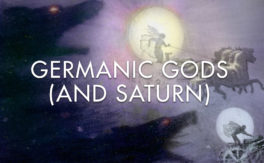Orange the color was named for orange the fruit, not the other way around.
The English word for the color orange has a trail back through a few European languages with its origins in the Sanskrit “nāraṅga” which was the name for the orange tree. Oranges the fruit came to Europe through Spain with the Moors, who in Arabic called the fruit “nāranj”.
“Nāranj” became “narange” in English during the 14th century and by the early 16th century the spelling became “orange.” The word “orange” was then used to describe things that were the color of the fruit.
Some confusion may apply
Without a name for a color, cultures use the words they have to describe the things around them. Because English didn’t have a word for the color orange until the 16th century, some things that are orange (or orange-ish) were labeled as red because it was the closest color that English had a word for. “Red” hair and the robin “redbreast” for example are really more orange than red, but they were named before English had the word “orange”.
Describing the colors of things before a language has names for those colors had been a problem across cultures for a long time. The Ancient Greeks had a very limited palette of color names to choose from. For example, there seems to have been no word in Ancient Greek for the color “blue” so in Homer’s The Iliad and The Odyssey he describes both the sky and the sea as being a wine / bronze color. Even stranger, he also describes sheep as being wine colored.





